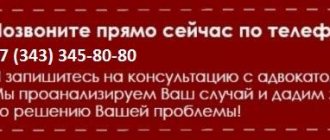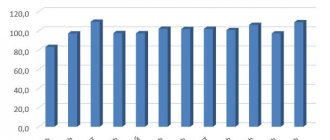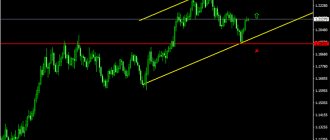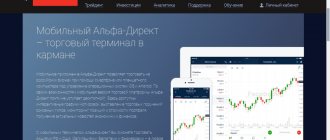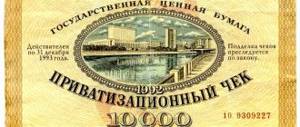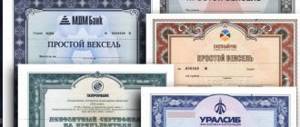The modern Russian Direct Investment Fund (RDIF) is a rational investment of savings in the most profitable types of activities. In other words, every person can direct personal funds to the development of any business. Large investors invest in promising enterprises, groups of organizations, as well as funds and business projects. If we consider a specific company, then net profits can be redirected between different sectors of activity.
What is an investment fund in simple words
The Investment Fund of the Russian Federation is an association of people and organizations that have decided to invest in a project and receive income.
If it’s still not clear, let’s look at an example. A certain citizen decided to buy an apartment to rent it out. But he doesn’t have enough money of his own to buy it. He, of course, can take out a loan from a bank, but the financial institution will have to repay the debt, and even with interest. That is, you won’t make a profit on rent at first.
Then the citizen goes the other way: he invites his friend who has the missing amount, they create an investment fund together, buy an apartment and start earning money from the first month of renting it out. But everyone receives a share of the income proportional to the invested amount.
The extra money received can now be invested again, for example, in a joint purchase of shares, and receive dividends.
Why is it needed?
An investment fund helps people who are unsure about where to invest money to earn it. As a rule, an investment fund buys shares of companies.
The investment fund has specialists who monitor the market situation and invest only in proven securities. If assets become unprofitable, the investment portfolio is revised. As a result, all investors receive income to one degree or another.
Functions
The main functions of an investment fund in the Russian Federation:
- Preservation and increase of deposits of private investors.
- Effective work of governing bodies in order to generate income.
- Attracting new investors under certain conditions.
How do IFs work?
The work of the investment fund is regulated by the laws of the Russian Federation, as well as international law. This is the Federal Law “On Investment. There are special legal acts in European countries and the USA: documents protect investors from fraud.
The activities of the investment fund are structured as follows:
- The investor invests his money and no longer manages it, except for the last stage - its withdrawal.
- The portfolio of an investment organization is managed by a management company that works with securities, currency, real estate and loans. The management company is interested in increasing profits, as it receives a commission from all transactions.
Example
Sberbank is the organizer of several investment funds with different assets and returns, for example, the Dobrynya Nikitich equity fund. He invests in Russian companies. Stocks are chosen by analysts.
Structure of investment of investment fund savings.
| Resources | Asset percentage | Company shares | Percentage of shares in the fund |
| Energy | 47 | Lukoil | 14 |
| Finance | 18 | Sberbank | 14 |
| Natural resources | 15 | Gazprom | 11 |
| Cash | 7 | Surgutneftegaz | 6 |
| Electric power industry | 6 | Norilsk Nickel | 6 |
| Industry | 2 | Tatneft | 6 |
| Communications | 2 | Rosneft | 5 |
| Everyday goods | 2 | VTB Bank | 4 |
| Durable goods | 0,5 | Inter RAO EC | 3 |
Under the leadership of the management company, the assets of Dobrynya Nikitich increased by 42% over 3 years. This is a pretty good profitability in the Russian Federation.
Who may be interested in investing in an investment fund
Future investors may show interest in investment funds if:
- They have no credits or loans, even from friends and relatives.
- There are free savings that can be safely kept on the balance sheet of an investment fund and will not be needed in the near future.
- The financial sector, in particular investments in securities, is of interest.
Types of IF
The classification of investment funds in the Russian Federation and the world is different depending on their structure, goals and objectives.
mutual fund
A mutual investment fund is a mutual investment fund. In it, everything that the fund has is divided among investors in the form of shares. The management company of such an organization is obliged to invest savings in any project.
In such an investment fund, the common property is distributed among investors in the form of shares. The share confirms that the investor has ownership rights to a certain part of the funds. The essence of a mutual fund is that the team invests funds in a specific project. For example, shares, bonds, depository, loans, real estate rental. The operation of the mutual fund is enshrined in the laws of the Russian Federation.
The investor enters into an agreement with the management company for trust management, for which the management company receives a commission from transactions.
Management can be collective and individual. In a collective investment fund, the management bodies of the investment fund combine the savings of shareholders into one portfolio, then distribute them according to the share. With individual funds, each investor's funds are accumulated separately.
IF of Russia
The Investment Fund of the Russian Federation was created so that our state could invest in various projects.
The budget of the Investment Fund of the Russian Federation is formed from the funds of the external debt and Stabilization funds, a quarter of the budget consists of contributions from private investors.
Investment projects are selected according to the following scheme:
- Part of the ownership of the invested project is registered in favor of the state.
- Funds are sent from the investment fund to the authorized capital of the organization selected for investment.
- Commercial investors enter into an agreement with the Russian Investment Fund for a period of no more than 5 years and pay for participation in the project.
- Projects must be economically and socially beneficial to the state, meet its requirements and, if they cannot be implemented without state support.
- The cost of the project is more than 5,000,000,000 rubles.
- Other indicators are also determined.
The project is selected on a competitive basis by a commission under the Ministry of Economic Development of the Russian Federation.
Mutual IF
A mutual fund attracts a huge number of investors through cheap stocks, which allows for small deposits. And at the same time losses are reduced.
Hedge
There are very few of these in the Russian Federation, since they attract only professional investors with large investments. They try to get the maximum benefit for their deposits and in a short period of time, thereby exposing themselves to unjustified risks. Investment funds buy securities very quickly and sell them just as quickly. Mostly distributed in North America.
Check
Check investment funds were actively created in the Russian Federation in the early 90s of the 20th century and have now been abolished.
Their goal was the transition from state ownership to private ownership. They collected vouchers that were in circulation in the Russian Federation, and then used them to purchase shares of enterprises from the state.
Exchange traded
Such an investment fund has its own shares, which also participate in transactions on the stock markets of the Russian Federation. Their quotes change from the opening to the closing of the exchange. The shares are calculated daily after the end of trading.
What is the difference between a venture fund and direct investment?
PEFs usually try to get quick results by investing in companies that have been on the market for a long time and where the risk is minimal. Moreover, investments are made for a short period, but large amounts at once.
The venture fund is invested in various enterprises in the Russian Federation, including numerous startups, which may not develop, and therefore the money will be lost.
Such investment organizations must have a large income; the venture fund receives it from less risky projects.
What is the difference between a private foundation and a non-private one?
| Properties | Private | Not private |
| Owners | Private investors and legal entities within a limited group of persons | Investors, both individuals and legal entities, without restrictions |
| Tasks | Manages deposits for the benefit of individuals and companies, for example for one family or close friends | Entering the securities market, attracting investors and multiplying their profits |
| View | Closed | Open |
| Registration | Not approved by government agencies of the Russian Federation | In the Central Bank of the Russian Federation and the tax office, as a legal entity |
| Asset control | Produced by the founder, who is represented by a single person | Managed by a management company |
| Anonymity | Information about the investment fund is not publicly available. The owner's name may not appear on documents | The documents contain the details of the legal entity; information about shareholders is not indicated anywhere. |
| Asset Allocation | Not all funds can be used for investment; some can be used for your personal needs | The assets are entirely located in the investment fund and cannot be used otherwise than for activities within the framework of projects |
| Business continuity | With the death of the founder, the organization continues its work. | Does not depend on the death of one of the members of the management company, works until the license expires |
| Inheritance scheme | The owner himself determines the rules for the distribution of assets and the heir | Only shares of the investment fund are inherited; each investor determines the rules of inheritance. If there is no will, the action takes place within the framework of the legislation of the Russian Federation. |
| Composition of the investment fund | May be: founder, board of directors, guarantor, shareholders | Management company, shareholders |
Features of foreign funds
Foreign investment funds help invest funds in international projects and the economies of other countries.
Are divided into:
- Investment funds of one country. Investing only within one state.
- Regional. They can capture one continent, for example, Europe or Asia.
- International. Investment in several countries.
- Developed countries. Savings are accumulated in specific countries with stable economies.
- Global. They invest not only in other states, but also in Russian enterprises.
Key Features
RDIF Management Company is a type of Russian mutual investment fund (UIF), with the main goal of making a profit by placing money for investors who bought shares. These 2 concepts have common characteristics:
- The registered investment share of a wealthy investor of a Russian fund is proportionally correlated with the total ∑ of his investments.
- Mutual Funds and RDIFs are controlled by the same legislative norms.
- Regarding government securities, there is a high risk of loss.
- Identical taxation applies. Additional finances are paid by the fund exclusively after the sale of securities. In this case, the condition must be met that the sale price exceeds the face value of the securities.
Multifunctional RDIF also has distinctive parameters that need to be taken into account:
- Russian investors are automatically given the right to influence the adoption of strategic decisions in the management of the enterprise.
- RDIF does not have the right to deal with securities of public companies.
- The intensity of the influence of the votes of Russian private equity participants in making management decisions regarding the dynamics of the organization depends on the rules of the management company of the fund itself.
- The volume of the share in this case does not matter at all.
- RDIF is prohibited from investing in securities of hospitality companies.
Types of mutual funds
Types of mutual funds are divided into three main ones, which, in turn, have an even finer division.
- Open type. You can invest in and withdraw funds from such investment funds on a regular basis. You only need to write an application or enter into an agreement, which will be reviewed within a few days.
- Closed. As a rule, created at the very beginning of a project with huge cash receipts, funds can be withdrawn only after its completion. The largest companies invest in such organizations.
- Interval. Somewhere between open and closed. Unlike both, savings can be deposited and withdrawn, usually quarterly, for a certain number of days. This allows the management company to invest shares as much as possible and not keep them.
Shares
It is created to invest funds in shares of various organizations to attract income. The management company, as a rule, invests in shares of the most promising companies. Before making investments, a thorough analysis of the Russian economy by professionals is carried out.
IF can be open, closed and interval type. Today, equity fund is more common compared to others.
Bonds
The investment fund's income comes from investing in bonds. They are usually organized for a period of up to 3 years. Due to fluctuations in the dollar exchange rate, investing in Russian bonds is less profitable than in foreign ones.
Trading takes place on Russian and international exchange markets.
With high risks, over the past 3 years, bond funds have increased their income by 1.5 times, which is much more than stock funds.
Real estate
They are created to invest in the construction and management of real estate. Most often closed. Large companies are attracted here.
There are several types:
- Construction. They are engaged in the construction of buildings that can later be sold or rented.
- Land. Carry out actions with land plots that increase their value.
- Development. They develop land purchased in the Russian Federation, build it up, repair real estate, and re-register it.
- Rental. They rent out residential and non-residential buildings, making a profit from it.
The property of the investment fund is only objects and securities related to real estate. For example, a mutual fund cannot invest in the energy sector.
Money market
A money market fund invests its funds in specific assets, that is, it does not buy stocks or bonds. Acts by issuing loans and providing deposits.
Types of money market funds:
- Retail. Among the investors there are mainly private individuals, more than 30%. The profit of such an investment fund is higher than just a deposit in a bank, but the risks are also greater.
- Institutional. The minimum investment is very high and is aimed at companies and the government. They work on an automatic principle. The money is received periodically via electronic transfer from the corporation's account.
Investment projects are designed for a period of no more than 1 year. Treasury bills and certificates of deposit are purchased on the market.
Balanced mixed funds
Such an investment fund can change its investments depending on the market situation. If stocks become cheaper, you can transfer investments to other securities or real estate. The main thing is that the management company carefully monitors changes in the exchange markets.
Although the income of such mutual funds is lower than investing only in a certain type.
Where does PEF invest?
The selection of investment objects is carried out according to various principles, including assessment methods and on the basis of insider information. Some funds are created to invest in a specific, predetermined pool of projects. The most common strategies:
- purchasing collateral assets at a reduced price;
- acquisition of a business on the verge of bankruptcy with a return to profitability;
- investing in startups before a sharp breakthrough;
- purchasing companies that are undervalued by multiples;
- merger of several businesses into one;
- entry into a niche market that is uninteresting to large investors.
For his work, the managing partner receives a remuneration, which usually consists of two parts: fixed, which is paid in any case, and variable, the size of which depends on the performance of the work. If the fund is operating at a loss, then the manager will receive money only from the “fix”.
Advantages and disadvantages
Positive aspects of IF:
- Investors do not monitor the situation on the market; all actions are left to professionals.
- The price of one share is attractive and can be as little as 1,000 rubles.
- Investments in many mutual funds are made in different assets, which reduces the level of loss of funds.
- Investment fund funds are not subject to tax.
- Control is exercised by the state.
Disadvantages of investment companies:
- If managed poorly, income is not guaranteed.
- Additionally, the services of the management company are paid from the funds of the investment fund.
- Restrictions may be placed on investment in certain sectors of the economy.
Problematic points
Direct investment funds face various negative aspects during the performance of their direct responsibilities. Most often, this is due to the fact that the number of firms suitable for manipulation is very limited. The trend itself is making progress difficult for private equity funds. They find it difficult to expand their capabilities.
Given the practicalities of profit maximization, Russian RDIFs should channel money to a large number of companies. The main risks are related to the fact that there is always a high probability of losing savings.
The intensity of development of the institution of private equity funds largely depends on the level of activity in the field of investment. Recently, this figure has decreased significantly under the influence of social, historical and interstate problems. The development of this Russian industry is hampered by corruption, which reaches the very top echelons of power. These structures, at their discretion, distribute funds, draw up all the necessary documentation, and also select the most promising investment projects.
Analysts with international authority examine all the problems of funds and also assess the situation. As a rule, it is always noted that Russian private equity firms lack direct investment, which is why there is low development dynamics.
Tips for choosing an investment fund
If the investor decides to invest in an investment fund in the Russian Federation, then it is necessary to determine the parameters and carry out the following actions:
- What fund is needed?
- Read the public documents of the investment fund and its statements. The official website will help with this.
- Find out the number of years of work in the market.
- Find out the efficiency of the management company, its financial instruments, check its profitability.
- Understand how much to invest initially.
- Read reviews about mutual funds.
Signs of fraud
When choosing an investment fund in the Russian Federation, you should also avoid fraudulent activities. Signs of an organization that should not be trusted:
- Fixed income. If a specific amount of income is mentioned, you should bypass the investment fund. No analyst can say this with certainty, because conditions change daily.
- "Special offer". This phrase is an attempt to capture the investor’s mind. In fact, all the structures, types and activities of the IF are known.
- Losses. Responsibility for them must be specified in the contract. You should be wary of the phrase “Not responsible for damages.”
- Urgent investment. The offer to “Invest urgently” should also be perceived as a sign of fraud: the investor needs time to understand the situation and find out information about the company.
- Wording in contracts and advertising. They must be clear, there is no need to fall for the words: approximately, approximately, approximately, from and to.
- Old schemes. Most methods of defrauding clients are already known. Therefore, if such investment schemes are offered, you need to stay away from them.
- Clear activity. If an investor does not understand the operating pattern of an investment fund, it is better to avoid it. In good IFs everything is clear and precise.
- Know-how and nanotechnology. You can only invest in projects that really exist, even if this thing has just been created. But, if you are convinced to invest in some new invention that does not yet exist in nature, you should reject such an offer, no matter how tempting it may be.
- Brokerage services. There is no point in signing papers for the provision of brokerage services and personal management of transactions: all this should be handled by the management company.
Is it worth buying shares of the most profitable mutual funds?
Such shares must be considered with caution: the market situation changes hourly, it is influenced by the development of the countries' economies, state sanctions, the political situation, and exchange rates. Therefore, in order to stay afloat, you need to consider the income of a mutual fund over several years, and not over the past months.
Plus, you need to find out why profits increased. If the management company managed the deposits correctly, then this is great, but if the investment fund is lucky, then it may not be possible to consolidate the success, much less develop it.
What to do to become an investor
Before investing your savings, you need to determine and do:
- What monetary capital does the future investor have? These are the funds that the investor does not need, and he can easily give them away for some time.
- Investing in which sector of the economy is preferable.
- What profit will you get in the end?
- Is the investor ready to lose money?
- Study economic concepts related to the investment fund of the Russian Federation and other types.
- Set yourself up to start investing.
- Choose a portfolio, not just one area of investment. You can try several investment funds with different areas of activity.
List of the best investment funds
Below are lists of the best investment funds both in the Russian Federation and in the world, presented taking into account various parameters.
Top 10 IF of Russia
| № | Investment fund | Description | Growth (%) |
| 1. | Sberbank – Global Internet | Asset Management | 38,5 |
| 2. | Alfa Capital Technologies | Equity funds | 32,1 |
| 3. | RAIFFEISEN – Information technology | Equity funds | 30,4 |
| 4. | Savings Management - Asia | Fund savings management | 30,3 |
| 5. | VTB - BRIC | Asset management, equity funds | 27,5 |
| 6. | OPENING – China | Discovery Funds | 25,9 |
| 7. | April Capital | Shares of mining companies | 25,4 |
| 8. | Discovery - Emerging Markets | Discovery Funds | 24,4 |
| 9. | RGS – World Technologies | Savings management | 23,5 |
| 10. | Raiffeisen – Active Management Fund | Mixed investment funds | 23,3 |
The world's most reliable funds
Among the best investment organizations in all respects are predominantly foreign companies.
| Investment fund | Where is | Assets (billions of dollars) |
| Fannie Mae | Washington, USA | 3 250 |
| Freddie Mac | McLean, USA | 1 946 |
| Credit Suisse | Zurich, Switzerland | 927 |
| Goldman Sachs Group | New York, USA | 856 |
| Morgan Stanley | New York, USA | 803 |
| London Stock Exchange | London, England | 777 |
| Berkshire Hathaway | Omaha, USA | 535 |
| Nomura Holdings, Inc. | Tokyo, Japan | 368 |
| Shinhan Financial Group | Seoul, Korea | 308 |
| State Street Corporation | Boston, USA | 274 |
| BlackRock, Inc. | New York, USA | 240 |
| Voya Financial | New York, USA | 231 |
Top European funds
| Name | Location |
| High-Tech Grunderfonds | Germany |
| SpeedInvest | Austria |
| PMV | Belgium |
| LocalGlobe | Great Britain |
| Mangrove Capital Partners | Luxembourg |
| Alven Capital | France |
| Swisscom Ventures | Switzerland |
Rating of the most profitable mutual funds 2019
| № | Investment fund | Description, owners | Growth (%) |
| 1 | VTB – Oil and Gas Sector Fund | VTB Capital Asset Management | 30 |
| 2 | SAN – Mixed investments | SAN | 28 |
| 3 | Sberbank – Natural Resources | Sberbank Asset Management | 28 |
| 4 | Ingosstrakh pension | Ingosstrakh - Investments | 27.4 |
| 5 | BKS Precious metals | Brokercreditservice | 26,5 |
| 6 | VTB – Moscow Exchange Index | VTB Capital Asset Management | 25,8 |
| 7 | VTB – Equity Fund | VTB Capital Asset Management | 25,4 |
| 8 | Raiffeisen – MICEX Blue Chip Index | Raiffeisen Capital | 25,3 |
| 9 | Solid – Moscow Exchange Index | SOLID Management | 25,2 |
| 10 | Leader – Shares | Leader | 24,6 |
Rating of mutual funds by net asset value
| № | Investment fund | Description, owners | NAV, MILLION RUB |
| 1 | VTB – Treasury Fund | VTB Capital Asset Management | 28 322,73 |
| 2 | Gazprombank – Bonds plus | Gazprombank - Asset Management | 23 733,55 |
| 3 | Ruble bonds | Pension savings | 23 410,70 |
| 4 | Raiffeisen - Bonds | Raiffeisen Capital | 18 468,40 |
| 5 | Alfa Capital Bonds plus | Alfa Capital | 17 909,66 |
| 6 | Sberbank – Perspective Bond Fund | Sberbank Asset Management | 17 809,31 |
| 7 | Sberbank – Bond Fund Ilya Muromets | Sberbank Asset Management | 14 464,58 |
| 8 | VTB – Balanced Fund | VTB Capital Asset Management | 13 314,65 |
| 9 | Alfa Capital Eurobonds | Alfa Capital | 9 40 |
| 10 | Eurobonds | Pension savings | 7 785,54 |
Rating of mutual funds by volume of funds raised
| № | Investment fund | Raised funds, million RUB |
| 1 | VTB – Balanced Fund | 10 700 |
| 2 | Alfa Capital Eurobonds | 7 612 |
| 3 | VTB – Treasury Fund | 5 540 |
| 4 | Alfa Capital Balance | 4 236 |
| 5 | Sberbank – Denezhny | 3 628 |
| 6 | VTB – Mixed Investment Fund | 3 541 |
| 7 | Sberbank – Natural Resources | 3 496 |
| 8 | VTB – Equity Fund | 3 322 |
| 9 | Ruble bonds | 2 290 |
| 10 | Alfa Capital Liquid shares | 2 269 |
Content
- 1 History 1.1 2010
- 1.2 2011
- 1.3 2012
- 1.4 2013
- 1.5 2014
- 1.6 2015
- 2.1 Manufacturing industry 2.1.1 Voltyre-Prom
- 2.2.1 Enel Russia
- 2.3.1 Alrosa
- 2.4.1 Tape
- 2.5.1 Vladivostok Airport



